By Ken Nelson…..
A lot of car people make the snide comment “I wouldn’t be caught dead in a DS” due to its appearance, so I tell them this story:
You’re right, you wouldn’t be caught dead in a DS in a head-on. You’d most likely live through it. A friend of mine was driving his DS in France years ago (it happened to be John Chassin, author of “Why Citroën” and “How Citroën” paperbacks) before seatbelts were being used, when a cabby driving his DS hit John head-on at about 50 mph, and both walked away unscathed – without belts. Both front ends had crushed as they were designed to do, spare tires absorbing a fair amount of the impact along with the radiators, front air tunnel to the rad, transaxle and then the water pump – about 4 feet of front end trashed.
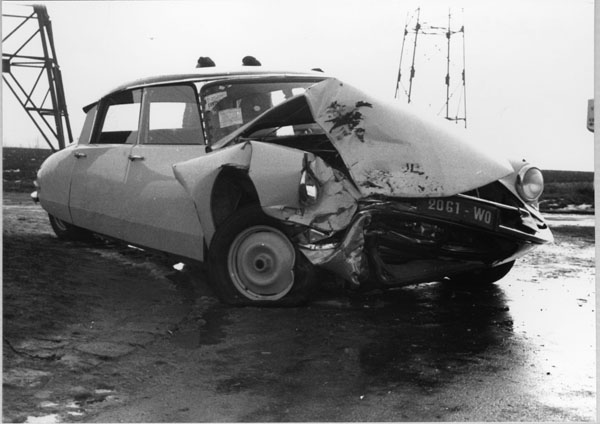
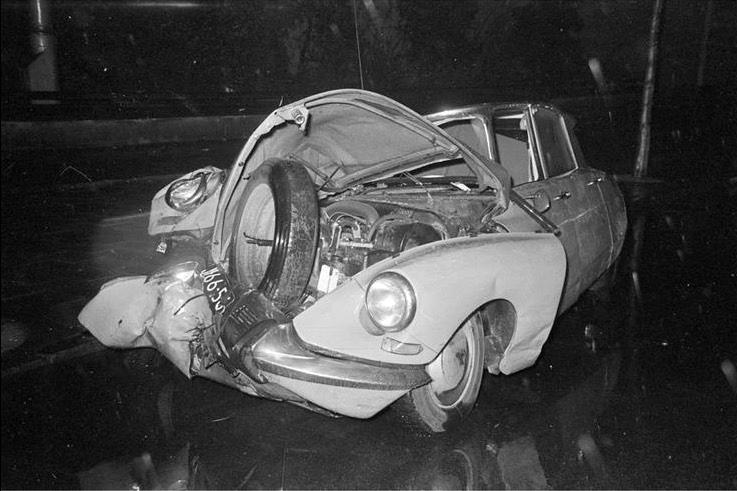
As for steering feel, some car people complain about a “lack of feel” through the DS system, but here’s why: The steering is designed to prevent feedback such as
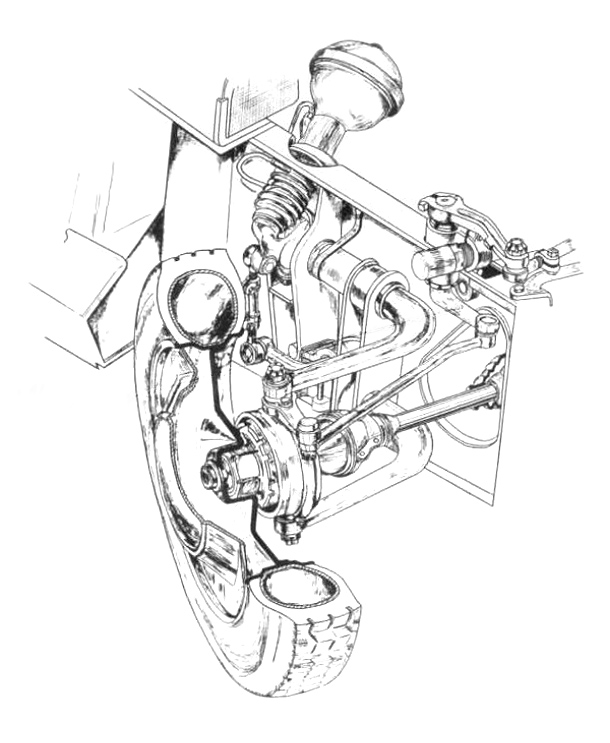
The steering is amazingly sensitive and powerful – you can drive a DS through a plowed field with your fingertips. And – the steering sensitivity is one-way, from the driver’s inputs only. Road shocks, torque steer, etc., from the wheel side of the

With
As absolute proof of this, Citroën’s early advertising featured a movie showing a DS19 being driven on an aircraft runway at 60 mph toward a
So, if someone needs to feel the steering through the steering wheel, he’s not going to get the “normal” response in a DS. However, since the steering linkages are all the best designs possible, with ball joints self-compensating for wear, the result is extremely accurate, responsive steering which almost never needs realignment. On top of that, there are NO huge rubber bushings on either the suspension arms or steering links that can age and crumble and mess up alignment and steering precision.
An owner just has to get used to the fact that the car goes exactly where the steering was directed – no wobble, no delay, it just reacts – fast and accurately. How many detractors know that ALL the DS suspension arms – front & rear – are mounted in Tapered Roller Bearings – the most expensive, most accurate and long-lived


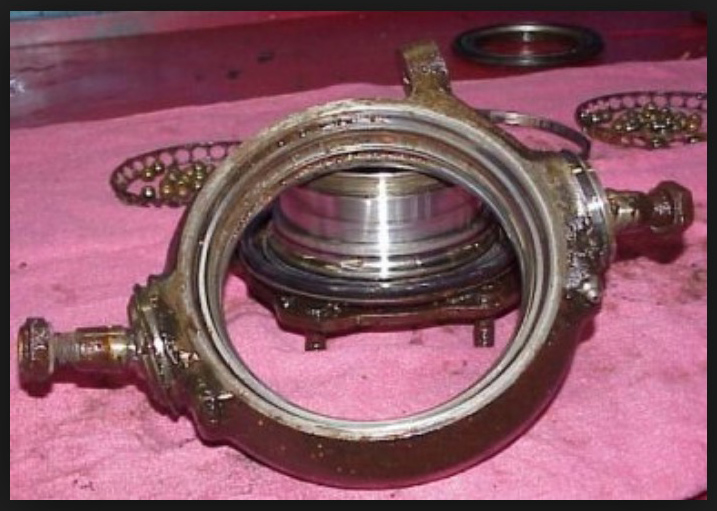
I’ve never needed to replace or re-lube one in dozens of Cits over 55 yrs. How many classic/modern car owners out there have had their directional precision made sloppy by cheapo cracking/crumbling rubber bushes? How many classic & sportscar owners talk about re-bushing the whole front end of their car due to inaccurate steering response and wandering?
Very few Citroën owners really understand just how sophisticated the engineering of a DS is compared to everything else on the road because they never get into the details nor try to understand them, as lots of its unique features are well hidden and don’t give trouble. And due to the midship-mounted engine, the polar moment of inertia of the car is very low, so the car responds instantly to any fast steering input which means you can avoid an obstacle or change direction faster than most other cars since the engine mass is located significantly behind the front wheels.

The best way to understand “polar moment of inertia” is to think of an ice skater doing a spin. When one’s arms are fully extended, a good portion of one’s body weight (mass) is out at the maximum distance from the body. At that position, a skater’s rotational speed is, let’s say, speed A. If the skater then just pulls his/her arms in, the person suddenly increases rotational speed very quickly and is running at speed A+++. Reason being, those heavy arms are now much closer to the skater’s center of mass, and rotation speeds up dramatically. Since the DS engine, it’s heaviest chunk of mass, is closer to the center of the car than in most cars, and it has a very long wheelbase compared to others, it can change direction considerably faster than a conventional car. So in scientific terms, a DS is the best example I can think of that makes excellent use of the rules of physics governing a moving object. And as some wag once said: “The science of physics isn’t just another good idea, it’s the LAW”.
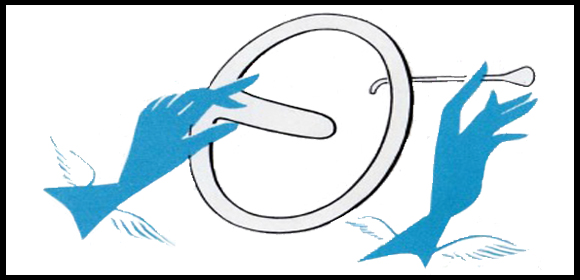
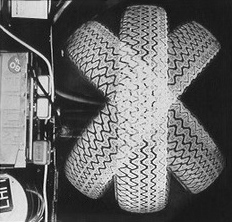

Does the SM share the same system?
It is based on the DS, but on the SM three things are different: First, the suspension arms are reversed. That is to say that rather coming from behind the wheel they trail to the wheel from in front of it. The other two things relate to the steering which is enhanced on the SM by being just 2 turns lock-to-lock, and it being the DIRAVI type (power steering with power-assisted return) that Citroen fitted on the SM, most CX’s and the XM.
I would mention also that the front suspension swing arms’ bearings castings are tilted slightly toward the front to provide anti-dive.
“This is due to the CENTERPOINT pivot system on the front driving/steering wheels”
Yhis is part of the reason but the SM does not have perfect centerpoint steering. When the D wheels were 4″ wide true centerpoint was in place. But when 15″ wheels were widened to 5-1/2″ the added 1/2″ was to the outside, not symmetrical. The SM wheels were widened further to 6″. The entire added 1″ is to the outside.
Further, the D and SM steering, while quite different in detail, are both LOCKED hydraulically. Any “feedback” would have to overcome the 2,300 psi hydraulic pressure. Any chocs (shocks) coming back to the steering wheel are transmitted by the solid steel connection from the wheel rims and the chassis. On all D and SM cars the only rubber bushings are where the upper/inner steering rods are fastened to the yoke on the steering rack gear rod/piston rod. The suspension arms are supported in tapered roller bearings.
The hydraulic locking does not apply to manual steering IDs.
“This” not “Yhis.” 5″ not 4″. I never had a Citroën with 400mm wheels, so I don’t know the width. I had some wheels and suspension parts with the 400mm hex hub wheels but they are long gone. The only car that I have had with 400mm wheels was a 1957 Panhard, which is also long gone.
My ID20 loses the “power” steering at low revs. Is this a major issue?
Thanks for the articles too. Great reading!
Most likely the main accumulator is flat. If the click-clack valve and hydraulic pump make a rapid “brrp-click-brrp-click-brrp-click” as you turn the wheel, with steering assist, this is probably the problem. The DS20 being the same as the ID10/DSpecial, which I had, I had the same problem. I replaced the main accumulator with a fresh one and the steering worked correctly.
fabulous engineering-outstanding design-beautifull-an ultimate driver’s vehicle